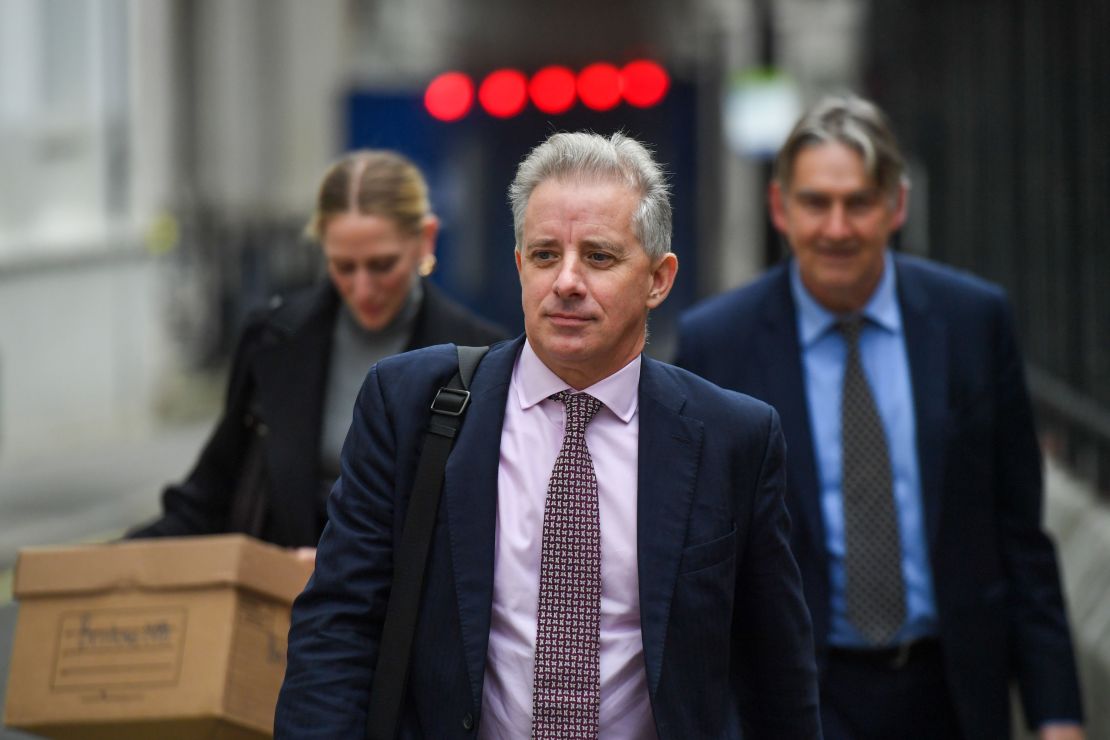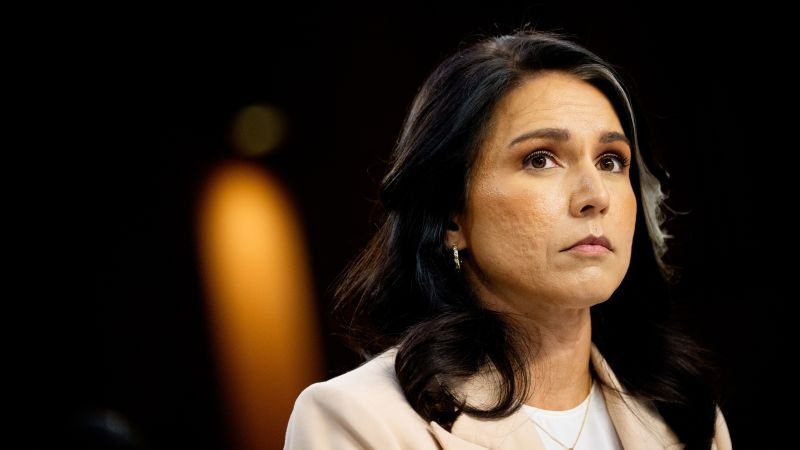CNN
—
Director of National Intelligence Tulsi Gabbard declassified and released new intelligence documents Friday that she claimed were evidence of a “treasonous conspiracy” by top Obama administration officials to manufacture the notion that Russia interfered in the 2016 presidential election.
But the allegations conflate and misrepresent what the intelligence community actually concluded, according to a review of a GOP-led Senate investigation from 2020 and interviews with congressional sources familiar with the probe.
The newly unsealed documents do nothing to undercut the government’s core findings in its 2017 assessment that Russia launched an influence and hacking campaign and sought to help Donald Trump beat Hillary Clinton, the sources said.
The new allegations from Gabbard lean on assessments before the election and statements from Obama-era intelligence officials finding that the Russians did not alter the election results through cyber-attacks aimed at infiltrating voting systems.
But the January 2017 Intelligence Community Assessment never concluded that Russian cyberattacks altered the outcome of the 2016 election or compromised any election infrastructure in the first place, though state voting systems were probed.
Instead, the assessment focused on Russia’s influence campaign ordered by President Vladimir Putin and cyber operations against US and Democratic Party officials, including the hacked emails released by WikiLeaks.
“These are two different things — cyberattacks on infrastructure and hacking the DNC — which they’re conflating in an attempt to make a political point,” said a former senior congressional source familiar with the Senate review. “It’s just wildly misleading on its face.”
In 2020, a bipartisan Senate Intelligence Committee review agreed with the intelligence community’s conclusions on Russia’s election interference and Putin’s role directing the effort.
Multiple congressional sources familiar with the Senate report said that Gabbard is trying to lean on intelligence assessments that no voting systems were breached to falsely make a broader leap that a Russian influence and cyber campaign did not occur. The Senate review included interviews with the intelligence analysts who drafted the report, none of whom reported any political interference, the congressional sources said.
Gabbard’s office did not respond to a request for comment for this story.
Gabbard’s declassified document release is only the latest example of Trump administration officials trying to rewrite the history of the Russia investigation during the president’s first six months in office.
Last month, CIA Director John Ratcliffe also released a review that criticized the intelligence community’s conclusion that Putin sought to help Trump, which he said was reached “through an atypical & corrupt process.” Ratcliffe referred former CIA Director John Brennan and former FBI Director James Comey to the Justice Department, which is now investigating, CNN previously reported. Gabbard also threatened on Friday to refer Obama officials to the Department of Justice for potential prosecution.
Trump and his allies have spent years trying to denigrate all aspects of the Russia investigation, which consumed much of the first two years of Trump’s first term – including the 2017 intelligence assessment; special counsel Robert Mueller’s probe and the FBI’s Crossfire Hurricane investigation; and the infamous dossier written by former British intelligence officer Christopher Steele, which was funded by the Clinton campaign and alleged coordination between the Russian government and people associated with the Trump campaign.
Trump touted Gabbard’s findings over the weekend, reposting videos of Gabbard speaking on Fox Business and memes of former President Barack Obama and his top officials in prison jumpsuits. Earlier this year, Trump declassified and released redacted documents from a binder that the White House compiled in 2020 criticizing the FBI’s probe, including the bureau’s errors in relying on the dossier to obtain foreign surveillance warrants on a Trump adviser.
“Obama himself manufactured the Russia, Russia, Russia HOAX. Crooked Hillary, Sleepy Joe, and numerous others participated in this, THE CRIME OF THE CENTURY!. Irrefutable EVIDENCE. A major threat to our Country!!!” Trump posted on Truth Social Monday evening.
The January 2017 intelligence assessment, released days before Trump took office, was a key first step in turning Trump against the “deep state.” He’s long disputed the conclusion that Putin and the Russian government aspired to help him win, believing it undermined the legitimacy of his 2016 victory.
A 2018 report by the GOP-led House Intelligence Committee disputed the tradecraft behind the conclusion that Putin tried to help Trump. Ratcliffe was a member of that committee at the time, and FBI Director Kash Patel was a top aide on the panel. Ratcliffe’s review last month did not dispute the intelligence community’s finding that Russia interfered in the 2016 election.
Gabbard alleged that the intelligence assessment on Russian interference relied on the Steele dossier and was used by the Obama White House to “subvert the will of the American people.”
In an 11-page memo accompanying the declassified documents, Gabbard cites emails from intelligence officials and an earlier September 2016 intelligence assessment stating that foreign adversaries don’t have the capability to “covertly overturn the vote outcome.” The memo points to talking points in December 2016 for then-Director of National Intelligence James Clapper, stating: “Foreign adversaries did not use cyberattacks on election infrastructure to alter the US Presidential election outcome.”

Gabbard’s memo alleges that when the January 2017 intelligence assessment on Russian interference was released, it “falsely alleges, based in part on ‘further information’ that had ‘come to light’ since the election, that Putin directed an effort to help President Trump defeat Hillary Clinton.”
“This ‘further information’ is later confirmed to be the Steele Dossier,” the memo states.
But congressional sources took issue with both of her claims: The intelligence community conclusion of a Putin-directed campaign was not evidence that the election outcome had been altered, they said, and the committee’s interviews with the analysts who drafted the assessment said that the Steele dossier did not inform its analysis.
There was an internal debate about whether the dossier should be part of the assessment or a separate annex, but the CIA insisted it be kept out of the report, according to the committee’s report.
“All individuals the Committee interviewed stated that the Steele material did not in any way inform the analysis in the ICA — including the key judgments — because it was unverified information and had not been disseminated as serialized intelligence reporting,” the committee report states.
Gabbard’s memo claims the dossier was involved in the assessment on the basis of an “ODNI whistleblower,” who had worked previously on election interference and said they were sidelined on the January 2017 Russia document.
The memo states that the whistleblower was “shocked” to be told in helping to respond to a 2019 Freedom of Information Act request that the dossier was “a factor” in the intelligence assessment.
But the email that’s cited in the memo merely states that the dossier was a factor because it was an annex to the intelligence assessment — there’s no suggestion that means it was involved in the crafting of the analysis itself.
Virginia Sen. Mark Warner, the top Democrat on the Senate Intelligence Committee, said in a statement that the panel’s investigation resulted in a “unanimous, bipartisan conclusion” that Putin interfered in 2016 to benefit Trump.
“This is just another example of the DNI trying to cook the books, rewrite history, and erode trust in the intelligence agencies she’s supposed to be leading,” Warner said.

